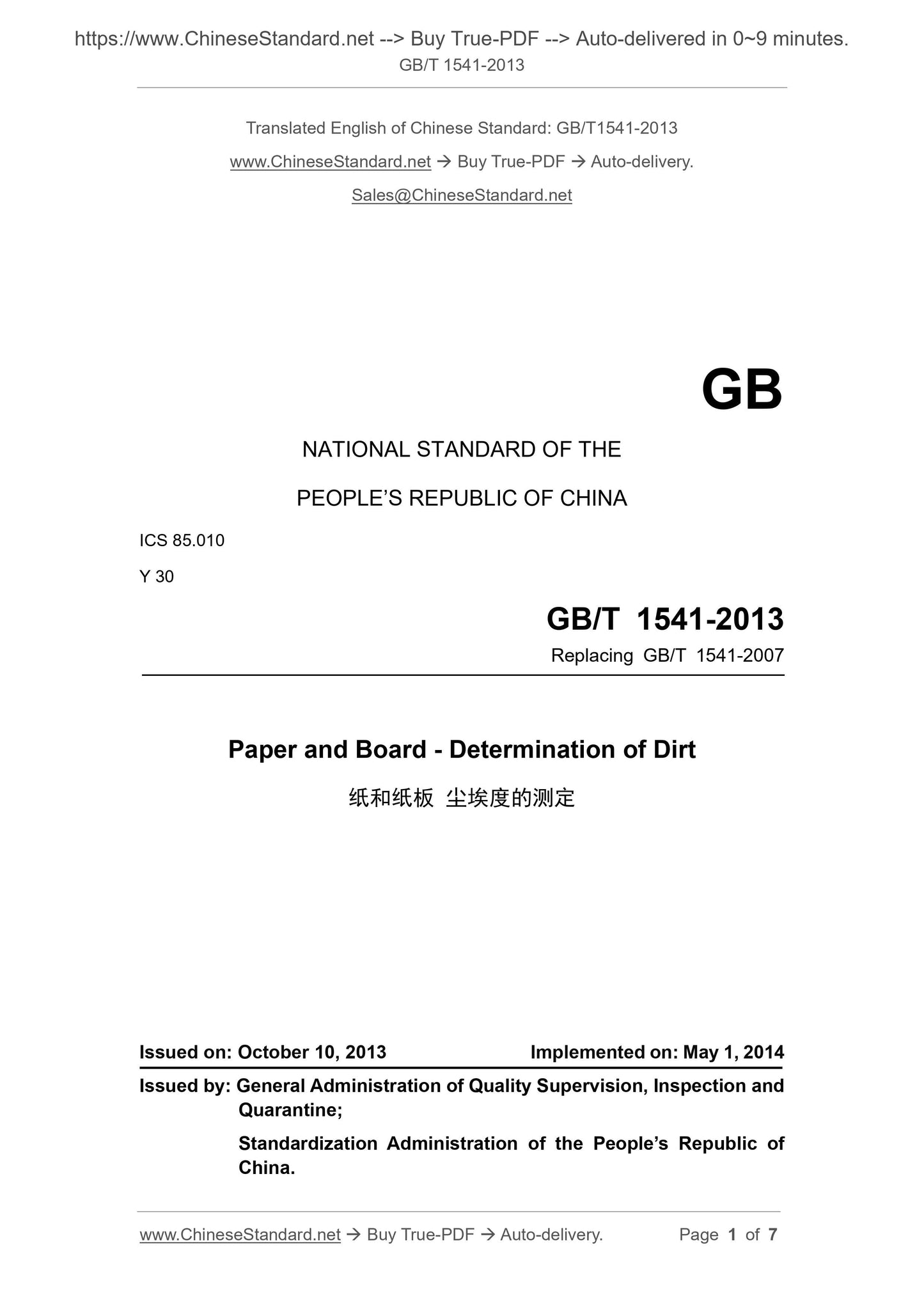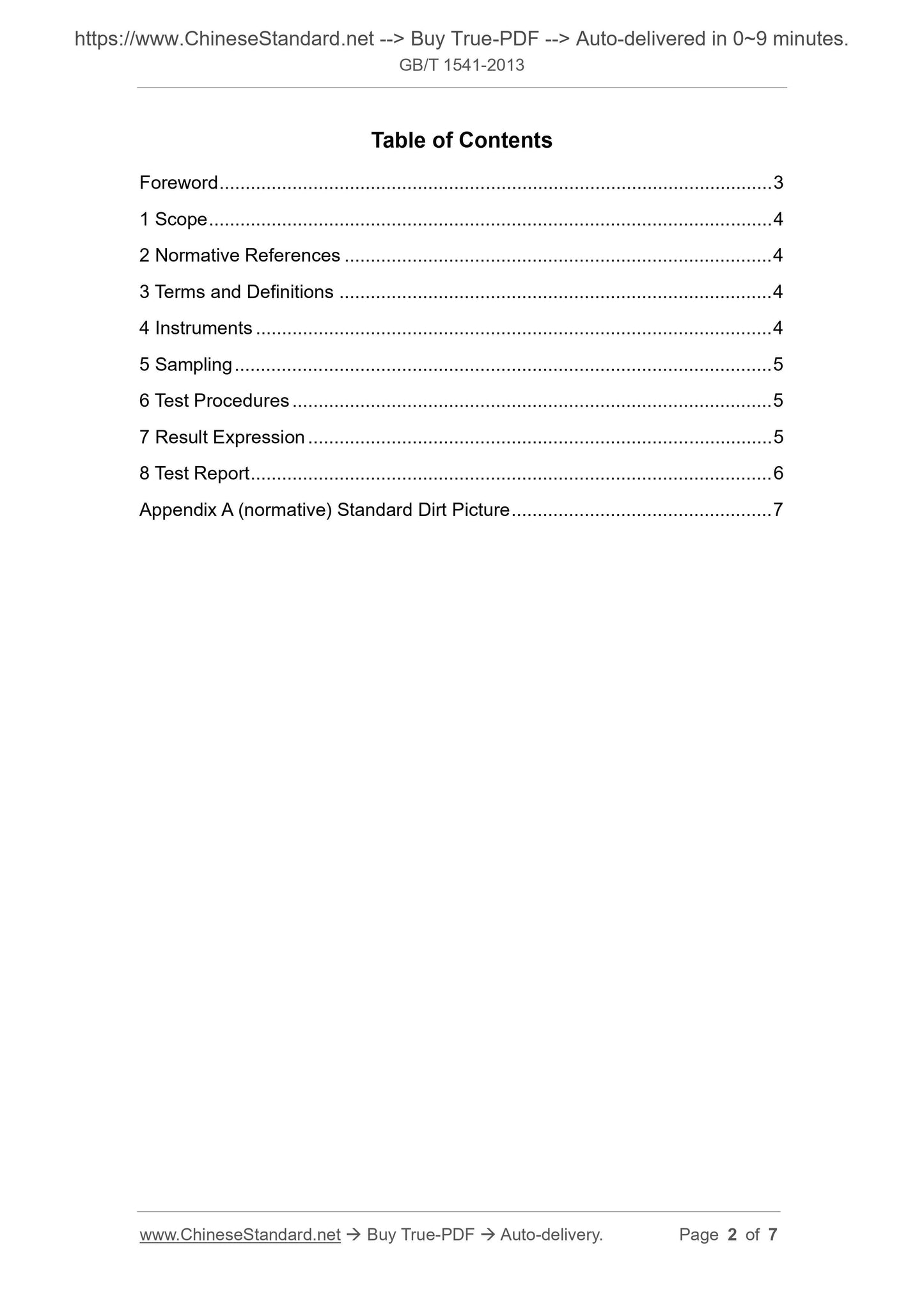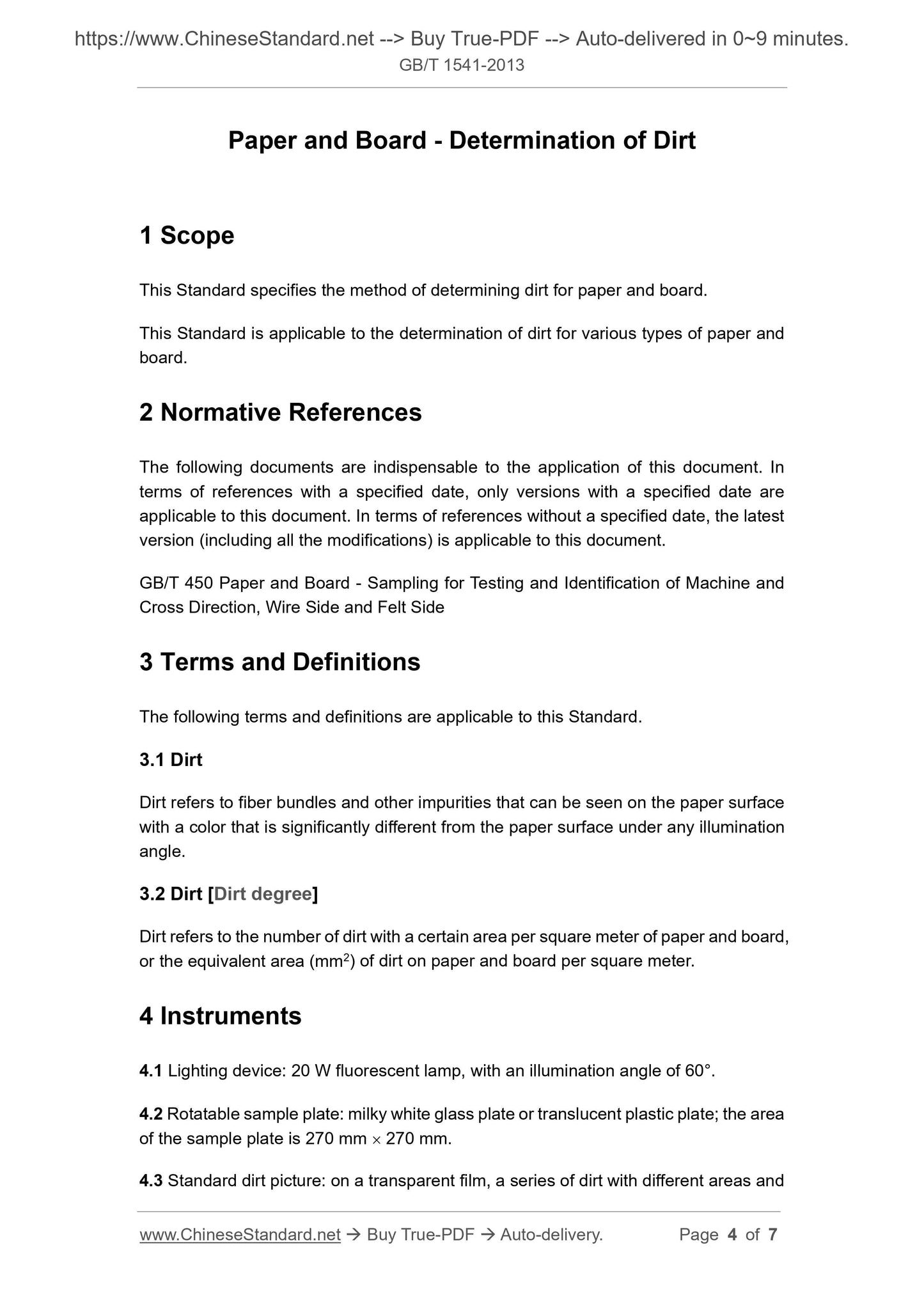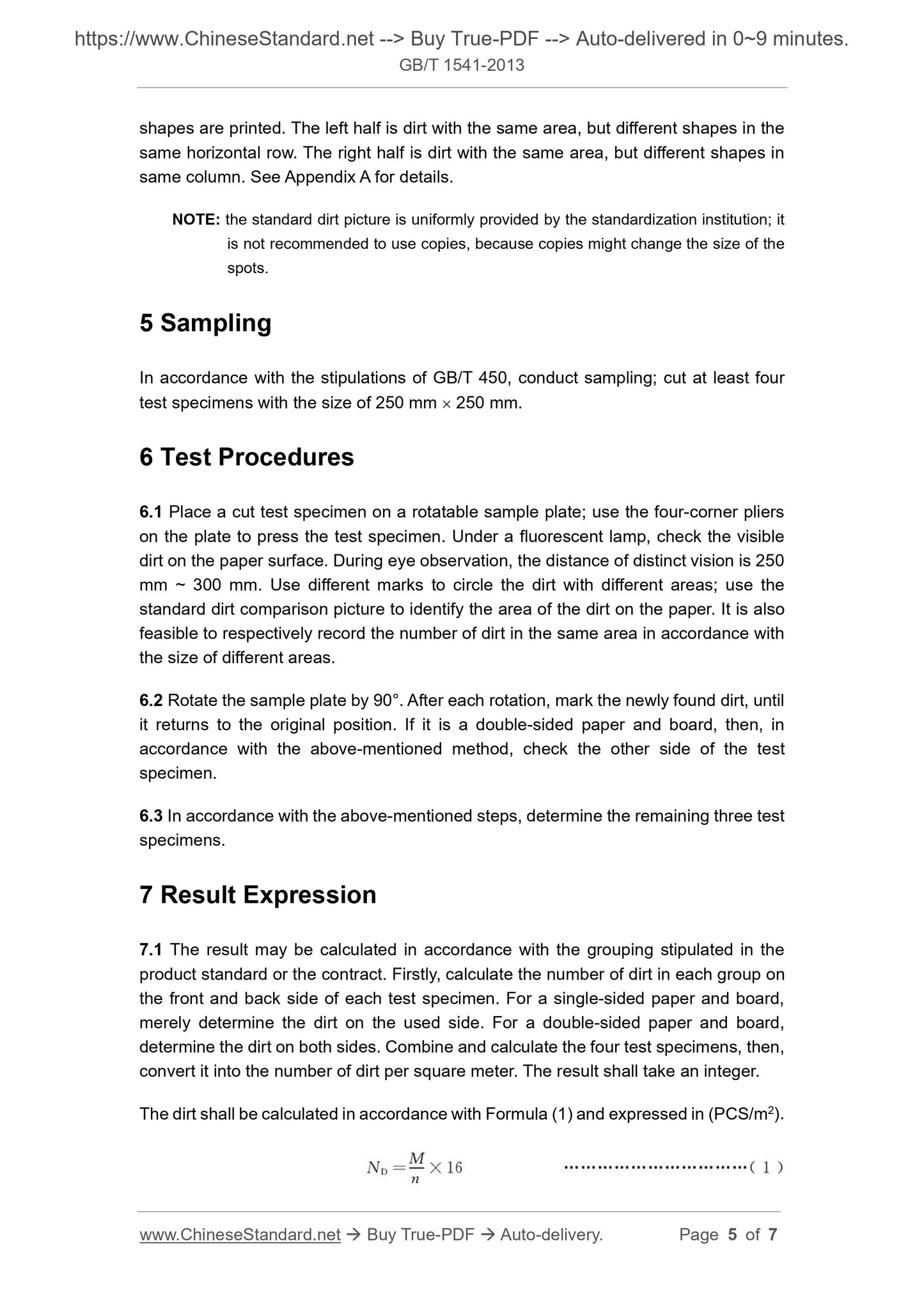1
/
of
4
www.ChineseStandard.us -- Field Test Asia Pte. Ltd.
GB/T 1541-2013 English PDF (GB/T1541-2013)
GB/T 1541-2013 English PDF (GB/T1541-2013)
Regular price
$70.00
Regular price
Sale price
$70.00
Unit price
/
per
Shipping calculated at checkout.
Couldn't load pickup availability
GB/T 1541-2013: Paper and board -- Determination of dirt
Delivery: 9 seconds. Download (and Email) true-PDF + Invoice.Get Quotation: Click GB/T 1541-2013 (Self-service in 1-minute)
Newer / historical versions: GB/T 1541-2013
Preview True-PDF
Scope
This Standard specifies the method of determining dirt for paper and board.This Standard is applicable to the determination of dirt for various types of paper and
board.
Basic Data
| Standard ID | GB/T 1541-2013 (GB/T1541-2013) |
| Description (Translated English) | Paper and board -- Determination of dirt |
| Sector / Industry | National Standard (Recommended) |
| Classification of Chinese Standard | Y30 |
| Classification of International Standard | 85.010 |
| Word Count Estimation | 5,593 |
| Older Standard (superseded by this standard) | GB/T 1541-2007 |
| Quoted Standard | GB/T 450 |
| Regulation (derived from) | National Standards Bulletin No. 21 of 2013 |
| Issuing agency(ies) | General Administration of Quality Supervision, Inspection and Quarantine of the People's Republic of China, Standardization Administration of the People's Republic of China |
| Summary | This standard specifies the method for measuring the degree of paper and cardboard dust. This standard applies to the determination of a variety of paper and cardboard dust degrees. |
Share







